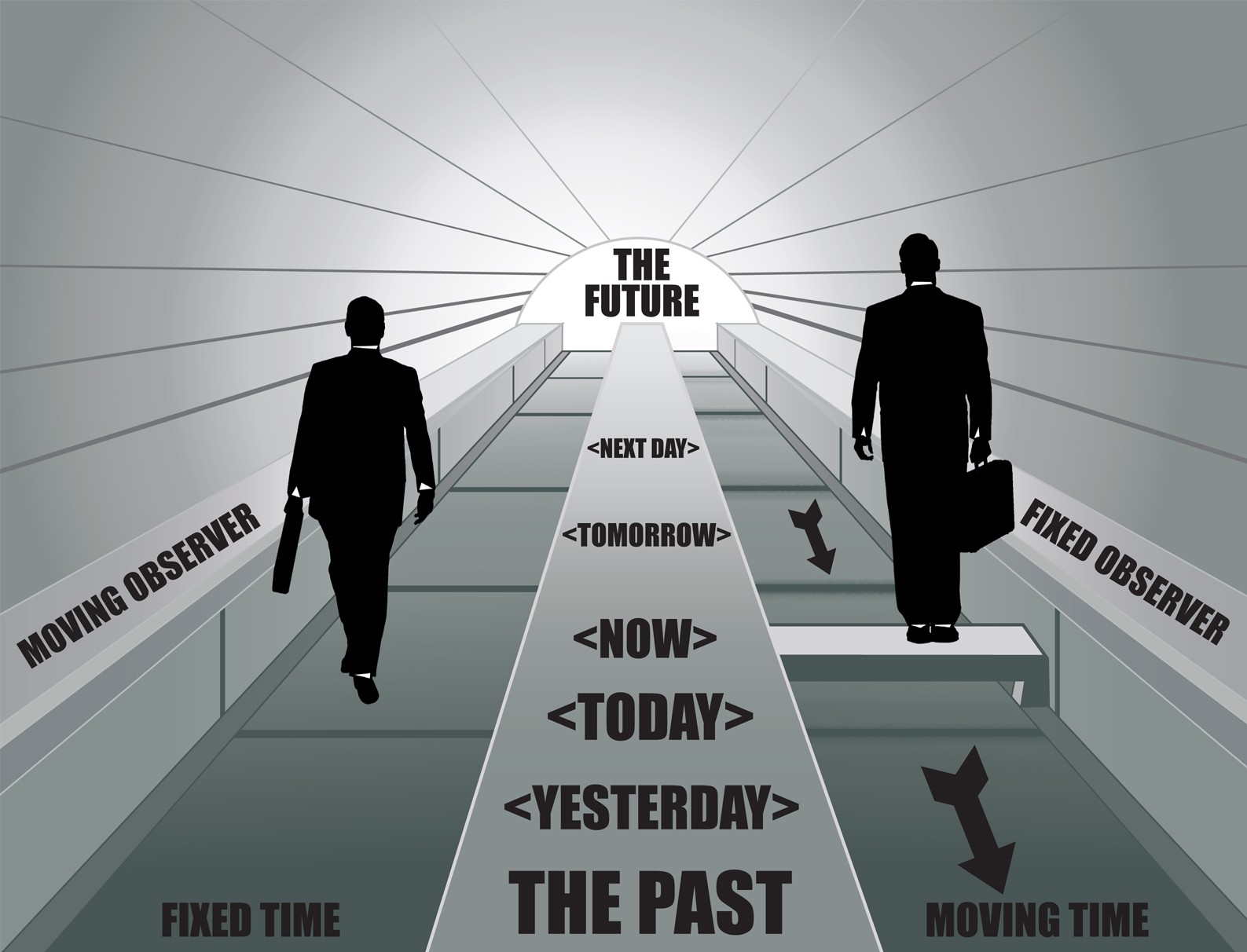
- Graphic by Scott McKenzie, North Coast Journal
You walk into work one morning and your boss says, "You know the meeting we were going to have next Wednesday? We've moved it forward a couple of days." Question: Is the meeting now scheduled for Monday or Friday? Think about this for a moment before reading on.
We envisage time metaphorically, usually in relation to space or events, since "time" cannot be conceptualized in its own terms. The metaphor comes in two primary flavors. Consider the meaning of "pass" in the two sentences, "While you were away, I passed the time happily," and "The week seemed to pass by quickly."
In the first sentence, you're using the Moving Observer metaphor for time: time is laid out like a measuring tape, and you are the actor moving into the future: "I'll be there in half an hour," "We're halfway through the year already." See left side of graphic.
In the second, it's time that's passing you by, in the Moving Time metaphor. You're standing still and time is now the actor, rolling toward you from the future: "The time will come when you'll be sorry you said that," "Summer went by so fast." See right side of graphic.
Back to the meeting that was moved forward a couple of days. If you're the Moving Observer, then moving the meeting ahead means moving it forward two days from where you'll be on Wednesday -- you're facing into the future, so the meeting is now on Friday.
On the other hand, if you're using the Moving Time metaphorical point of view, you're standing still and it's the meeting that's moving toward you, from Wednesday to Monday. In tests on college students, responders split roughly 50/50 on whether the meeting is now on Monday or Friday.
Note that in both these metaphors, we look "ahead" to the future while the past is "behind" us. That's true for most of humankind, but it's not universal. The Peruvian Aymara Indians, for example, imagine things more logically than we do. For the Aymaras, the past is in front of them, since they can "see" the known past. Past time is nayra pacha, literally "front time," and when an Aymara uses hand gestures in talking about the past, the farther in front of them the hand, the older the event. And the unseen future, q'ipa pacha ("back time") is, of course, behind them.
Makes sense to me. Time for me to look back to next week's column.
Barry Evans ([email protected]) time-travels into the future, one day at a time.
Comments
Showing 1-1 of 1